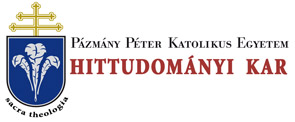Folia Theologica et Canonica 3. 25/17 (2014)
IUS CANONICUM - Szabolcs Anzelm Szuromi, O.Praem., Crystallization process of the ecclesiastical discipline regarding the sacrament of extreme unction and its canon law historical sources
CRYSTALLIZATION PROCESS OF THE ECCLESIASTICAL DISCIPLINE... 233 In this question the most important canonical text of papal origin in the Decretimi Gratiani (ca. 1140) is D. 95 c. 3 which is a letter by Pope St. Hormisdas (514—523), written on February 15th 517, explaining St. James’ aforementioned letter18. It must be noted that this papal letter is erroneously attributed to Pope Innocent I (401 ?—417) both in the Corpus iuris canonici edited by Emil Fried- berg, and in the earlier and more recent literature dealing with this topic - see e.g., the work of Felix M. Cappello19 or Jean Gaudemet20. This passage is the one most referred to also by the subsequent source-texts including the Codex iuris canonici of 1917.21 We must add that this canon had an eminent significance even before the work of master Gratianus22, which is confirmed by its use by Venerable Bede; by the text of Canon 72 of the Council of Worms in 86823, and especially by the Decretum and Tripartita textual families (i.e. ID 2. 75; Tr 1.38.5) of the canonical collection of Ivo of Chartres (between 1093 and 1095). We must refer to C. 26 q. 7 c. I24, which can be found in significant 11th century canonical collections, namely in Burchard’s Decretum (BW 18.14)2S, and in St. Ivo’s textual families too (ID 15. 36; Tr 3. 28 [29] 7). This canon contains not only the description and effect of those intercessory acts, that are possible in circumstances of danger of death, but explicitly descends to the form of the administration of the holy anointment, which includes the imposition of hand by the priest in order to forgive the sins, saying of a prayer and the giving 18 Jaffé, P., Regesta pontificum romanorum ab condita Ecclesia ad annum post Christum natum MCXCV1II. Ed. secundum curaverunt S. Loewenfeld (JL: a. 882-1198), F. Kaltenbrunner (JK: 7-590), P. Ewald (JE: a. 590-882), Lipsiae 1885 (repr. Graz 1956), JK 784 (494). 19 Cappello, F.M., Tractatus canonico - morális de sacramentis, 111: De extrema unctione, Tauri- ni-Romae 1949. 8-9. 20 Gaudemet, J., Église et cité. Histoire du droit canonique, Paris 1994. 265. 21 D. 95 c. 3: Illud superfluum uidemus adiectum, ut de episcopo ambigatur, quod presbiteris licere non dubium est. Nam idcirco de presbiteris dictum est, quia episcopi occupationibus aliis in- pediti ad omnes languidos ire non possunt. Ceterum si episcopus aut potest, aut dignum ducit aliquem a se uisitandum, et benedicere, et tangere crismate sine cunctatione potest, cuius est ipsum crisma conficere. Non penitentibus istud fundi non potest, quia genus est sacramenti. Nam quibus reliqua sacramenta negantur, quomodo unum genus putatur posse concedi? His igitur, fráter karissime, omnibus, que tua dilectio uoluit a nobis exponi, prout potuimus respondere cu- rauimus. Friedberg I. 332. 22 Browe, P., Die letzte Oelung in der abendländischen Kirche des Mittelalters, in Zeitschrift für katholische Theologie 55 (1931) 515-561, especially 527. 23 Mansi XV. 881-882. 24 C. 26 q. 7 c. 1 : Ab infirmis in periculo mortis positis pura est confessio peccatorum inquirenda, non tarnen illis inponenda est quantitas penitenciae, sed innotescenda, et cum amicorum oratio- nibus et elemosinarum studiis pondus penitenciae subleuandum, si forte migrauerint, ne obligati et conmunione et consortio ueniae fiant alieni. A quo periculo si diuinitus ereptus conualuerit, penitenciae modum a sacerdote sibi inpositum diligenter obseruet, et ideo secundum auctorita- tem canonicam, ne illis ianua pietatis clausa uideatur, orationibus et consolationibus ecclesias- ticis, sacra unctione olei inuncti, secundum statuta sanctorum Patrum conmunione uiatici re- ficiantur. Friedberg I. 1041. 25 PLCXL. 941.
